All the osteopaths at the practice are trained in Medical acupuncture. There are two types of acupuncture – Traditional Chinese Acupuncture (TCM) and Medical Acupuncture
Medical Acupuncture
Acupuncture for chronic pain, tension headaches and migraines.
Traditional Chinese Acupuncture
TCM techniques go back as far as 2000 years ago, and traditional acupuncturists believe that the underlying principle of treatment is that illness and pain occur when the body’s “Qi”, or vital energy, cannot flow freely.
This can be due to a variety of factors such as emotional and physical stress, poor diet, infection or injury.
By inserting ultra-fine sterile needles into specific acupuncture points, a traditional acupuncturist seeks to re-establish the free flow of “Qi” to restore balance and trigger the body’s natural healing response to treat a wide range of health problems and reduce pain. This is not the type of acupuncture that is used at the Ilkley Osteopathic Practice.
Medical acupuncture
Medical Acupuncture is a treatment which can relieve symptoms of chronic pain, tension headaches and migraines.
Acupuncture stimulates the nerves in skin and muscle, and it increases the body’s release of natural painkillers – endorphin and serotonin – in the pain pathways of both the spinal cord and the brain. This modifies the way pain signals are received.
Acupuncture needles are the same width as human hair and are much smaller than an injection needle, so having acupuncture does not feel the same as having an injection.
The needles are disposable, pre-sterilised and individually packaged. These are often supplied in guide-tubes for easy insertion which means that there is no risk of anything touching the needle during the process
Modern research shows that acupuncture can affect most of the body’s systems – the nervous system, muscle tone, hormone outputs, circulation, antibody production and allergic responses, as well as the respiratory, digestive, urinary, and reproductive systems.
What happens during a treatment?
During your osteopathic treatment which consists of deep soft tissue massage, joint mobilisation and manipulation if appropriate, the osteopath will determine if medial acupuncture is would be beneficial to your treatment plan. The osteopath will palpate for trigger points or areas of tenderness within the muscle and insert a needle into the area. When needles are inserted, you may feel a temporary, sharp pricking sensation. The needles are then left in for 5 – 20 mins.
Needling or pulsing of a myofascial trigger point will elicit a local twitch response, which is an involuntary spinal cord reflex in which the muscle fibers in the taut band of muscle contract. The local twitch response indicates the proper placement of the needle in a trigger point. Needling that elicits LTRs improves treatment outcomes, and may work by activating endogenous opioids, increase local blood flow allowing for the removal of metabolic waste and reducing muscular hypertonicity.
Are there any side effects to Acupuncture?
Any side effects tend to be mild and short-lived. They may include: fatigue, light headedness, bruising, localised bleeding or soreness or redness or mottling of the skin around the needle sites. If you continue to feel tired after a treatment, it is recommended that you do not drive or operate machinery.
What is medical acupuncture effective for?
Medical Acupuncture may be effective for the following conditions:
Pain relief for a wide range of painful conditions. It is commonly used to treat musculoskeletal pain, for example – back, shoulder, neck and leg pain;
It has been used successfully to treat headaches, migraines, trapped nerves, chronic muscle strains, sports injuries and various kinds of arthritic and rheumatic pain. If you have any questions regarding if medical acupuncture work for you please contact the practice to make an appointment or speak to an osteopath.







